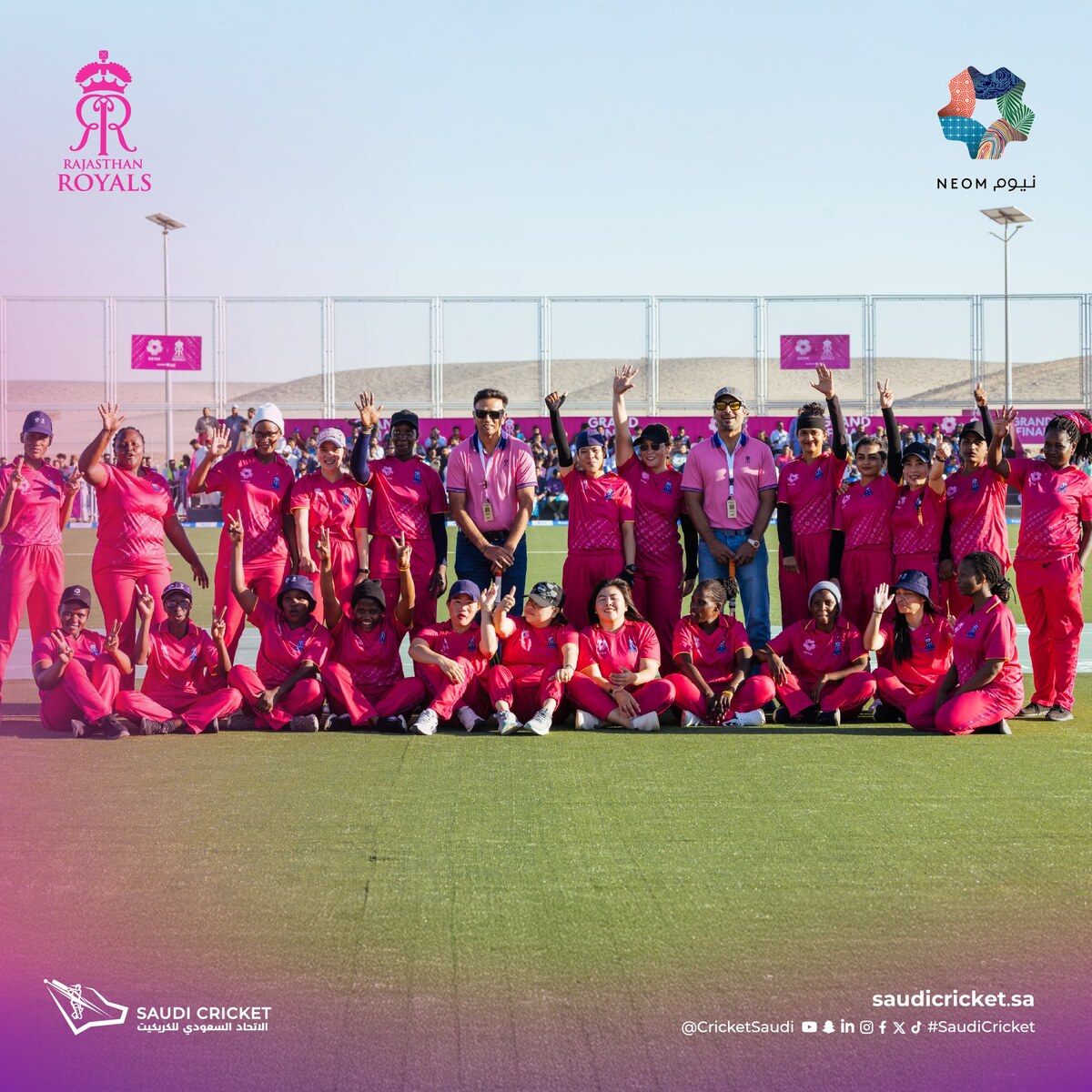Victory in the 2023 Asian Cricket Council’s Challenger Cup in Thailand has catapulted Saudi Arabia’s men’s team into unchartered waters. It also emphasised the increasing levels of competition within Asian cricket.
As recently reported, the Saudi team’s success was in a 50-over one-day international competition, rather than the Twenty20 format that has become prevalent.
The Challenger Cup is the first staging post in the ACC’s restructured three-tier pathway toward the Asia Cup 2023. It is comprised of eight teams and has been designed to provide increased opportunities for a larger number of its members to display their talents.
There are 25 members of the ACC, divided into full and associate members. India, Pakistan, Sri Lanka, Afghanistan, and Bangladesh, all Test-playing countries, have full-member status.
The UAE, Nepal, and Oman have associate status for T20 and ODI cricket and a further 15 have associate T20 status. These are Bahrain, Bhutan, Cambodia, China, Hong Kong, Iran, Kuwait, Malaysia, the Maldives, Myanmar, Qatar, Saudi Arabia, Singapore, Tajikistan, and Thailand.
Participation in the Challenger Cup was drawn from this last group of members. Cambodia, China, and Tajikistan did not participate, while Hong Kong, Kuwait, Qatar, Malaysia, and Singapore, were considered to be too strong. Indonesia, a member of the East Asian Pacific region, participated by invitation.
Few of the eight teams had played any 50-overs cricket since the Southeast Asian Games in 2017 and, for Saudi players, these were their first international ODIs. Bahrain and Bhutan have not played any competitive one-day cricket since the lower divisions of the International Cricket Council’s World Cricket were scrapped a decade ago.
The teams were divided into two groups of four in a single round robin, with Bahrain, Bhutan, the Maldives, and Iran competing in Group A, and Thailand, Saudi Arabia, Indonesia, and Myanmar in Group B. The top two teams progressed to crossover semi-finals.
These were the critical matches, as the two winning teams would progress to the next tier of qualification, the Premier Cup.
Based on their respective T20 rankings, Bahrain and Saudi Arabia were pre-tournament favorites. Although not necessarily a reliable guide, given the different nature of the formats, it turned out to be accurate. Neither team lost a group match, winning by large margins. The real surprise was the heavy defeat which Saudi Arabia inflicted on Bahrain in the final, bowling them out for only 26 in 21.1 overs and reaching the target in the fifth over.
In April, the two finalists will join eight more experienced associates — the UAE, hosts Nepal, Oman, Hong Kong, Singapore, Malaysia, Qatar, and Kuwait — at the ACC Premier Cup, the second tier of qualification for the 2023 Asia Cup. Only the winner will proceed to the third and final stage.
The Premier Cup will provide a stiff test for the Saudi team. Yet, it should not be overawed. The pressure will be on the more established teams for whom expectations have been raised by recent successful qualifications for major tournaments.
Pressure is something the UAE has faced in the last week in the ICC League 2 qualifying tournament for the 2023 ICC World Cup. As covered in a column in October last year, this comprises of nine teams who have played each other in a set of tri-series which started back in August 2019.
The UAE is competing with Oman, Scotland, the US, Namibia, Nepal, and Papua New Guinea to decide on places in the next tier of qualification. Each team is scheduled to play 36 matches. Scotland and Oman have completed their matches and have secured first and second places, respectively. This leaves third place to be settled.
As of March 5, there were three possibilities, Namibia, which had completed its matches, with 39 points, Nepal, with five matches remaining on 30 points, and the UAE with six remaining on 31 points. The two teams had to play each other twice.
Somehow, on March 5, the UAE were defeated by the bottom team in the league, Papua New Guinea, by five wickets. The next day, Nepal beat them by 42 runs, which meant that a third-place finish in the league was beyond them.
In February, Nepal had 18 points from 24 matches. Now, if they win their remaining four matches, a total of 40 points would be achieved, one more than Namibia, sufficient to claim third place. Nepal’s late burst of form has scuppered the UAE’s hopes in a surprising way.
These fluctuations in cricketing fortunes are a facet of the game with which the Saudi team is going to have to become accustomed.
Currently, they have a coach who can provide guidance, having experienced a professional cricket career in Pakistan, for whom he played four Tests and 10 ODIs between 1994 and 2000.
After starting coaching in Pakistan, Kabir Khan has coached the UAE and Afghanistan twice, when they qualified for the 2012 and 2014 World Cups. However, he left that post less than six months before the World Cup started in Australia and New Zealand, citing family reasons.
His appointment as Saudi coach in 2021 comes as cricket is seeking to establish itself within the Kingdom and on the international stage, in a controlled manner.
Kabir coached the women’s team in their first ever international tournament in Oman in March 2022. The team was young and inexperienced, having taken up the game only months before the tournament. There is much catching up to do with neighboring countries, who have been playing women’s cricket for 10 years or more.
There is developmental work being pursued at the under-19 level for men. In the World Cup Asia Division 2 Qualifier in October in Oman, the Saudi team finished fourth out of eight teams, behind Hong Kong, Oman, and Singapore. These will be the players of the future to progress Saudi cricket internationally, following on from the achievement in the Challenger Cup. This landmark moment manifests the hard work and development measures put in place since 2020.


























